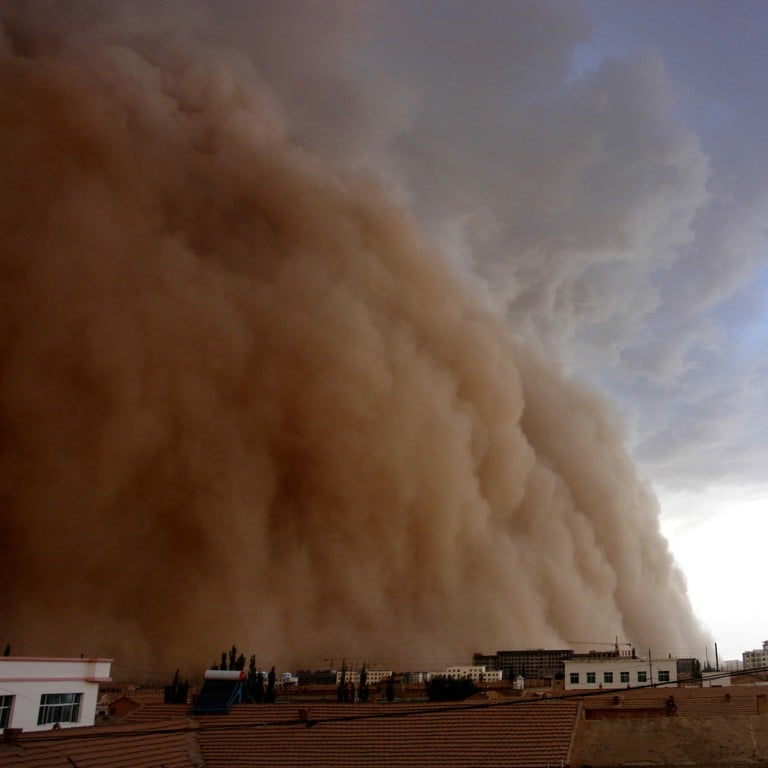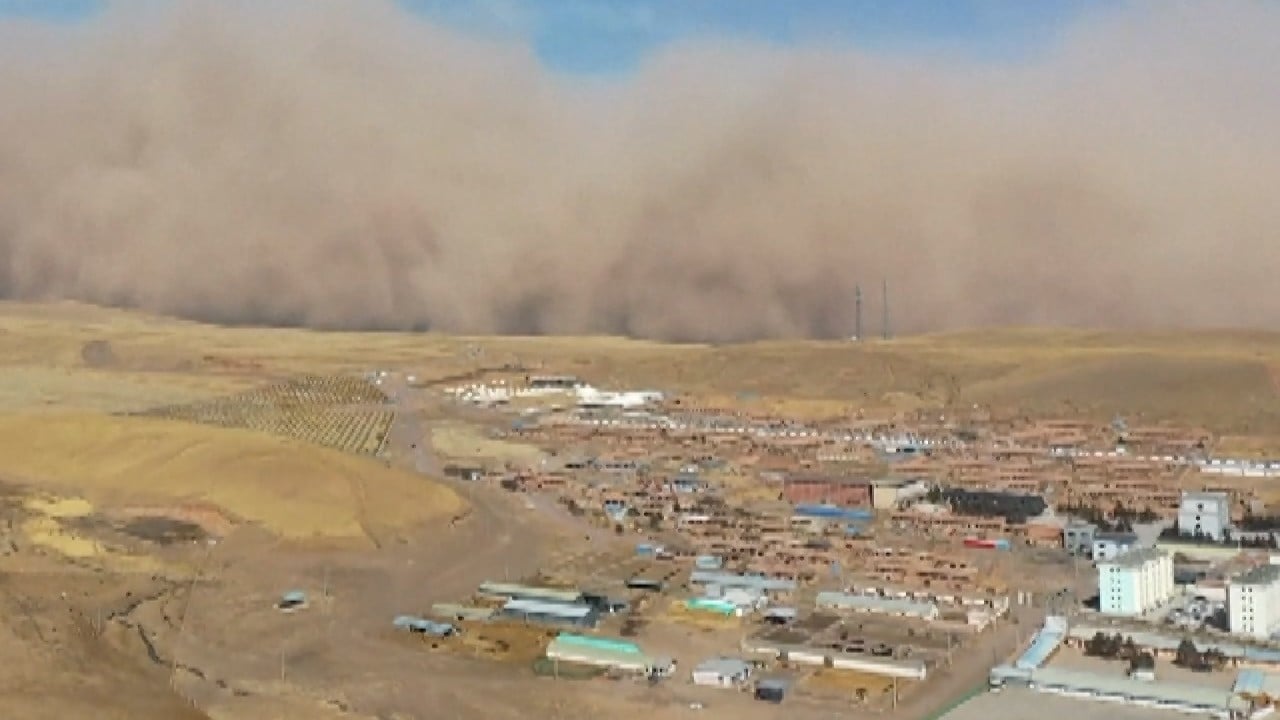
Should China stop blaming Mongolia for severe dust storms? A study suggests yes
- Chinese scientists have found that wind speed plays a larger role in creating dust storms than levels of rainfall and vegetation
- It means that Mongolia’s ecology and environment have less impact on the number of sandstorms than previously believed
At the time, China’s Ministry of Ecology and Environment largely attributed the severe sandstorms to Mongolia.
A ministry official said Mongolia’s reduced rainfall was not conducive to vegetation growth and higher temperatures had melted snow, leaving large areas of exposed sand. Winds then blew sand across the border.
But now some Chinese scientists say a bigger factor may be in play.
The results of their study appeared on Wednesday in Science Bulletin, an academic journal jointly published by the Chinese Academy of Sciences (CAS) and the National Natural Science Foundation of China.
One piece of evidence supporting the scientists’ finding was that Mongolia’s normalised difference vegetation index, a measure of vegetation cover and vigour, was actually at normal levels last spring.
The scientists’ analysis suggested that the above-average number of sandstorms in northern China last year was probably caused by strong winds.
To verify this, they compared the average wind speeds in the first seasons of 2022 and 2023, using data from monitoring stations in China’s northern cities. This showed the 2023 figures were “significantly higher” than the previous year.
According to the paper, the average wind speed in northern China showed a downward trend between 1973 and 2012. Over the same time period, the number of dusty days also decreased each year.

Conversely, since 2013, both wind speed and the number of dusty days have increased.
“Therefore, if wind speeds continue to increase, dust and sand events may become more frequent in northern China,” the scientists wrote in the paper.
Sandstorms require powerful winds and a concentration of sand and dust to form, with the latter being influenced by factors such as ground vegetation, precipitation and air temperature.
In China, sandstorms typically strike Beijing and surrounding areas in the spring. In such weather, strong winds suck large amounts of sand and dust from the ground into the atmosphere, carrying the particles hundreds or thousands of kilometres away.
With more than 1.7 million sq km (656,000 square miles) of desert in northern China and more than 300,000 sq km of desert in southern Mongolia, China is one of the world’s most severely affected countries by sandstorms.
Trade, trains, sandstorms in focus as China vows closer ties with Mongolia
But while decades of investment has seen significant progress made in reducing the number of sandstorms, in more recent years, this weather phenomenon has once again become a public concern.
According to the China Meteorological Administration, the average number of dusty days in northern China was only 3.7 in 2013. This then began to fluctuate, though, increasing to seven days by 2021.
Despite their new focus on wind speed, the researchers also stressed that Mongolia’s influence on China’s intensifying sandstorms could not be completely ignored.
“Mongolia’s natural environment has an impact, although it is uncertain whether it is a dominant factor,” said a researcher at the CAS Institute of Atmospheric Physics, who wished to remain anonymous.
But he cautioned against blaming Mongolia, adding that ecological and environmental problems should be viewed as a global issue – and should be solved from a global viewpoint.


